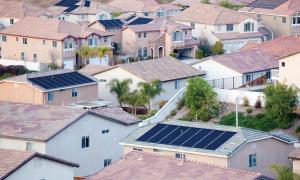The case for utilities to compete directly with distributed resources.
John Slocum is an executive advisor at Concentric Energy Advisors.
The electric utility industry is undergoing a transformation. This transformation arises from technology, economic and policy trends that are spurring growth in self-generation and other non-regulated energy service options for consumers, such as distributed renewable generation, combined heat and power and microgrid facilities.

It inverts the traditional model – with a focus on capital-intensive investment – to one based on the primacy of the utility customer, who increasingly enjoys a wide range of competitive products and services to help manage energy use, and even supply some or all of its energy requirements from behind the utility meter. In this new model, electricity delivered by the local utility is but one energy supply option.
At the same time, utilities and merchant generators face rising capital requirements for new or replacement generation capacity, environmental compliance, transmission expansion, replacement and upgrading of aging infrastructure, and cybersecurity compliance measures to maintain power supply reliability and grid integrity. Rate increases to recover the rising cost of grid-supplied power, in turn, could trigger even stronger customer demand for and enhance the competitiveness of behind-the-meter, non-utility energy service options.

